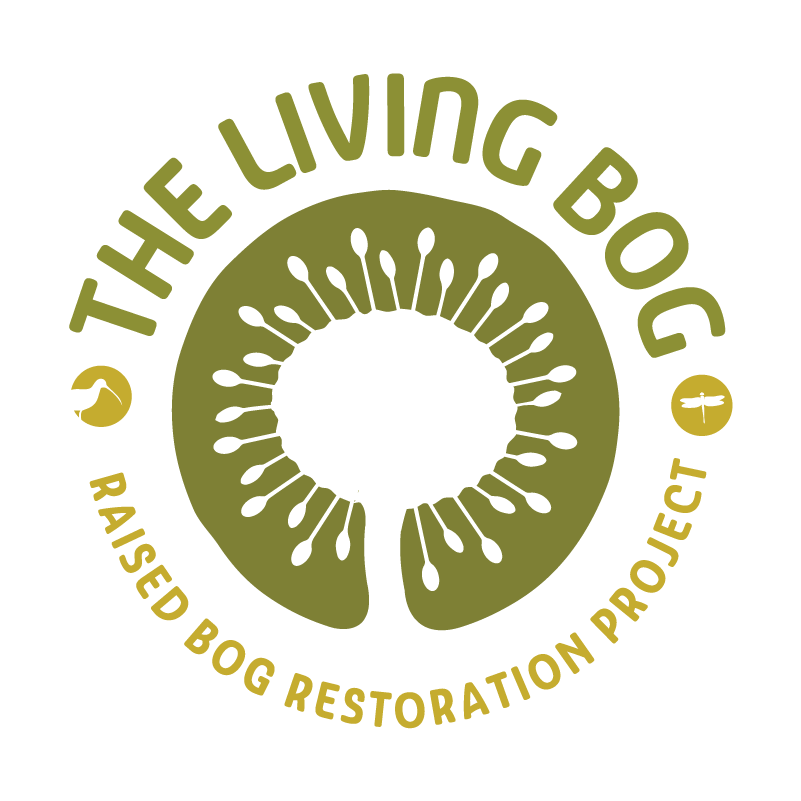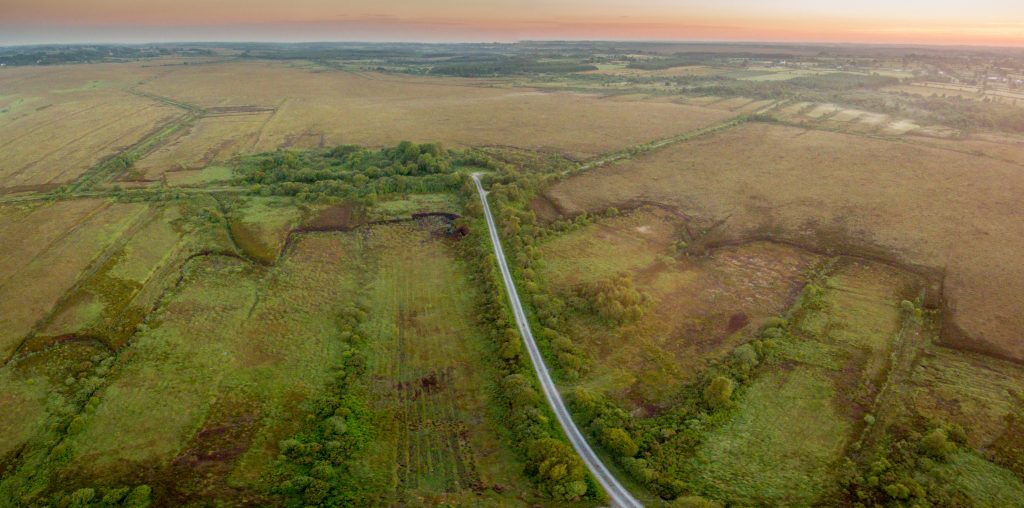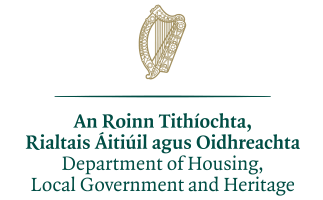‘Galway’s Living Bog’, aka Carrownagappul Bog SAC, just outside Mountbellew, is one of the biggest, most accessible raised bogs in Ireland. It has been at the centre of local community life for generations, and now welcomes people from all over the world to visit it. And why not? Not only is it one of the best examples of a raised bog West of the River Shannon, it is one of the most beautiful bogs in all of Europe.
At almost 1,200 hectares, it is the second biggest Living Bog project site, and thanks to its condition (plenty of raised bog and unique flora and fauna), its folklore and its location Carrownagappul has the potential to become one of Ireland’s foremost bogs to visit. You can learn a lot by visiting it, or by popping into the Interpretive centre at Galway Teleworks/Mountbellew Mart, just a few km from the bog.
The bog contains one of the largest extant areas of uncut high bog surface in all of Galway. It is also the most negotiable bog in all of Galway, traversed by a road and track network and thanks to areas like the historic Patches Garden right at the heart of the bog, it is a peatlands amenity with huge potential. Every single aspect of the Irish peatlands story is contained within its SAC boundary, and with a history going back over 9,000 years, it is a bog with a great story to tell!
Restoration works here took time, as there was numerous open drains (many of them hidden, other treacherously deep) and almost 25kms of them were blocked by The Living Bog team on the high bog alone. Careful assessment of the bog took place between 2016 and the commencement of restoration works here in January 2019. Works were completed April 2019, with additional works undertaken in September 2019 and again in 2020. In all, over 3,000 peat dams were required to encourage active raised bog growth on the high bog and cutover bog. Seveal large-scale plastic dams were also developed by The Living Bog to block particularly wide drains which were taking millions of gallons of water off the bog.
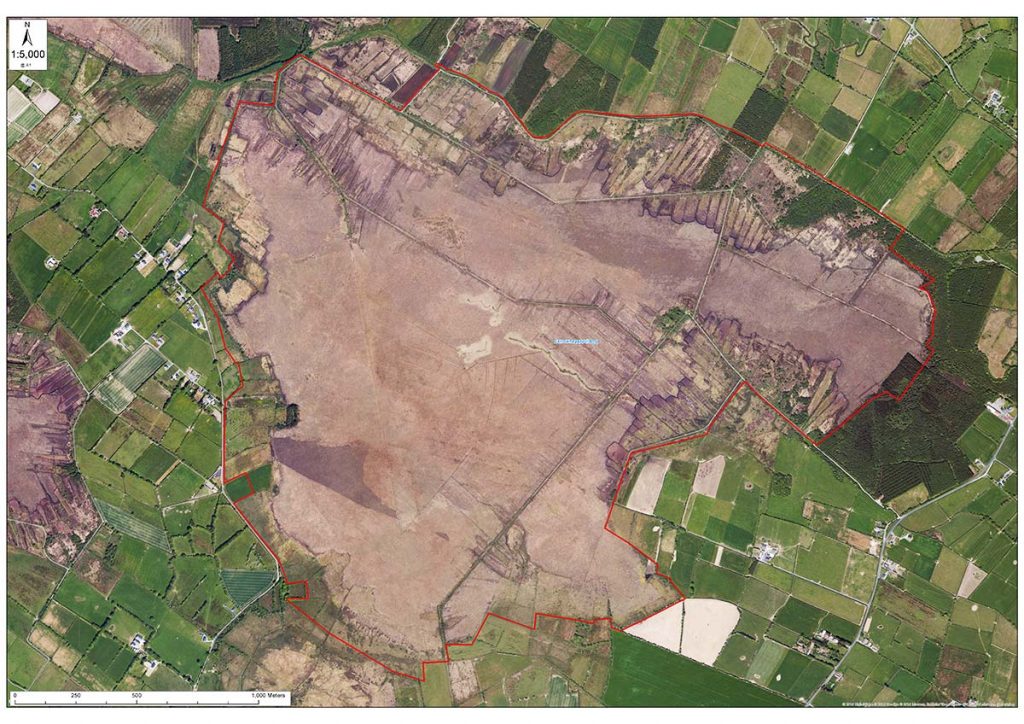
Numerous bog roads, tracks and drains extend into the centre of the site. Until very recent years, peat extraction occurred frequently along the margins of the site and along the bog roads. This turf cutting went back hundreds, if not thousands of years.
From surveys over the years it was established that some very low relief eskers run under the bogs. A till island lies in the centre of the site and this is not covered by peat. This island is known as ‘Patches Garden’ on account of its last occupant, Patch Cronin. This area is at the heart of both the bog and amenities on site. Looped walks all start and end at Patches Garden, and a special park is to be opened there in 2021 as part of Living Bog amenity plans on site.
This bog is a Special Area of Conservation (SAC) selected for Active Raised Bogs 7110, Degraded Raised Bog 7120 and Depressions on peat substrates (Rhynchosporion) 7150 – habitats that are listed on Annex I of the EU Habitats Directive (992/43/EEC), where Active Raised Bogs 7110 is further ranked as a “priority” habitat.
The Living Bog team have been surveying the bog since the project was established in 2016, and the results will be published here in due course. Already, some figures are above those from previous surveys.
Prior to the Living Bog, survey results (Raised Bog Monitoring Project 2013 (Fernandez et al.)) showed Active Raised Bog covers 28.07ha (8.68%) of the high bog area. High quality Active Raised Bog consists of both central ecotope and active flush. High quality Active Raised Bog comprises only 4.12ha, consisting of both central ecotope (2.74ha) and active flushes (1.38ha). The micro-topography of central ecotope consists of pools, low hummocks, high hummocks, hollows and lawns, and the wet ground is mostly very soft to quaking.
Total Sphagnum cover is in the range of 76-90%.
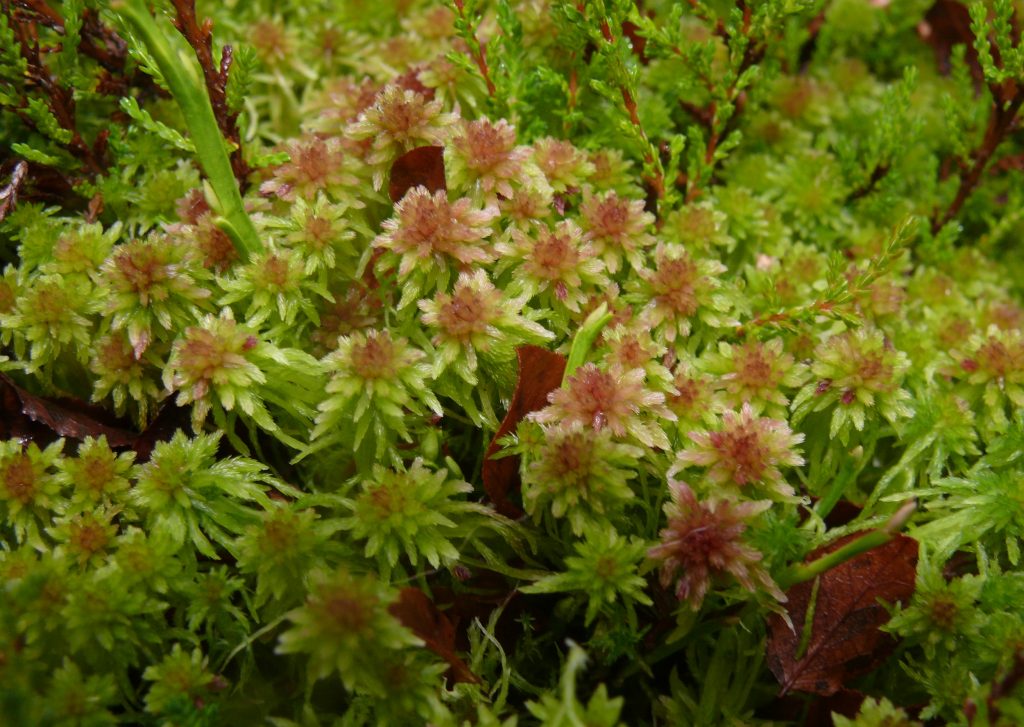
Sphagnum Cuspidatum on a healthy section of high bog
Degraded Raised Bog covers 295.41ha (91.32%) of the high bog area. It is drier than Active Raised Bog and supports a lower density of Sphagnum mosses, although Sphagnum cover is in the range of 30- 40% in the wettest of the sub-marginal community complexes recorded, and between 26-33% in some of the other wetter complexes. Degraded Raised Bog has a less developed micro-topography, and permanent pools and Sphagnum lawns are generally absent.
Prior to Living Bog, small scale restoration works, in the form of drain blocking on the high bog, took place at the site, but the high bog is extensively drained and the greater part of the drainage network remains unblocked. Several drains in the southern section of the high bog have been dammed, and the positive effects of this action have been recorded in the last survey, with Fernando reporting a 9.87ha increase in Active Raised Bog habitats, at the expense of former sub-marginal ecotope. These improvements were recorded over a substantial part of the southern section of the bog.
The current conservation objective for Carrownagappul Bog is to restore the area of Active Raised Bog to the area present when the Habitats Directive came into force in 1994. In the case of Active Raised Bog, the objective also includes the restoration of Degraded Raised Bog. The Area objective for Active Raised Bog is 73.06ha (comprising 64.55ha on high bog and 8.51ha on cutover).
Early indications from 2020 surveys and 2021 surveys indicate we are on course for this – if not the creation of even more!
